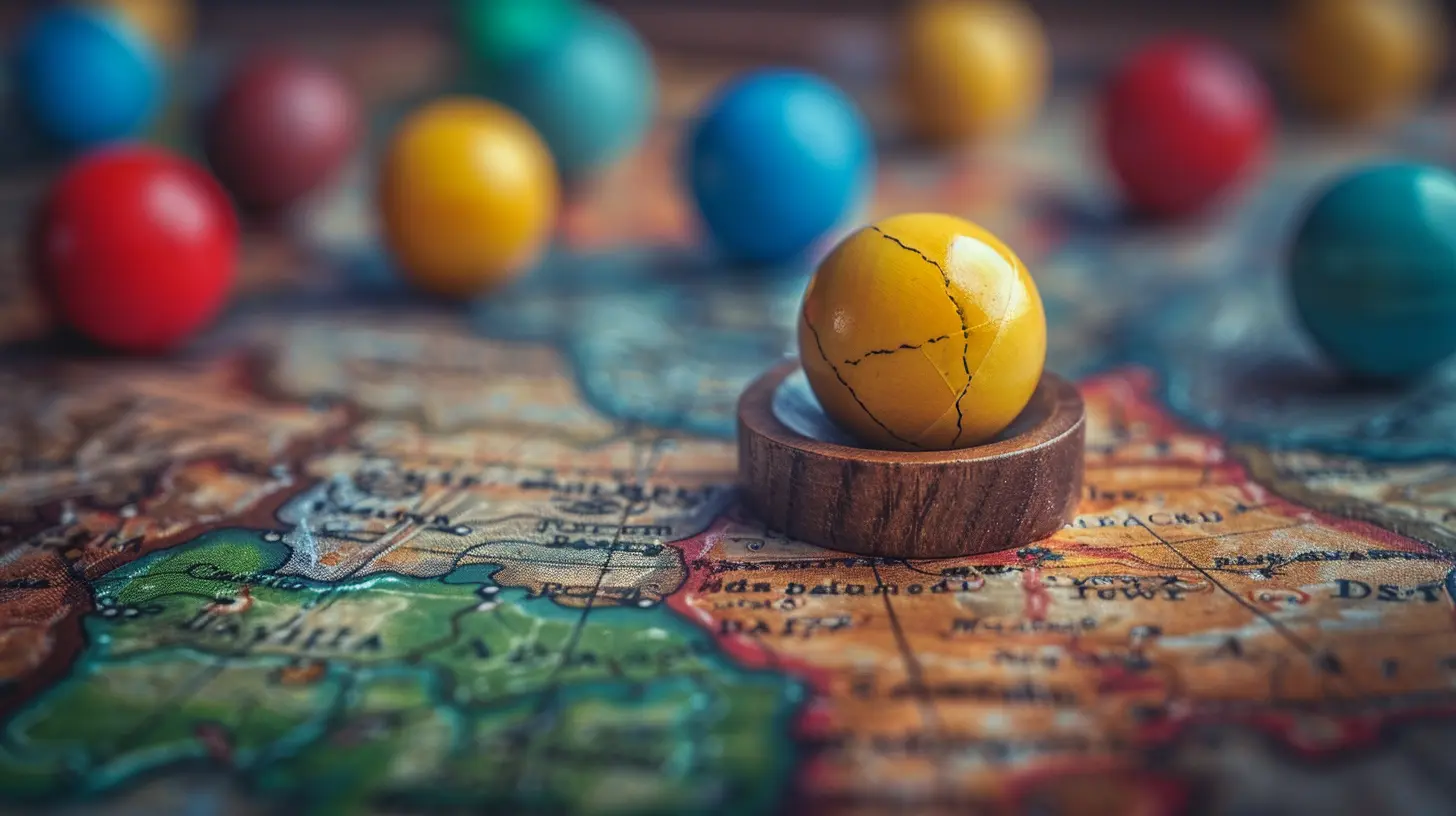Solving the Mystery of the Customer Journey Map
14 March 2025
Picture this: You’re trying to solve a puzzle, but you’ve got no picture on the box and missing pieces scattered all over the place. Frustrating, right? That’s pretty much what it feels like to tackle your business growth without understanding your customer journey map. If the term “customer journey map” sounds like another piece of jargon thrown your way, don’t worry—you’re not alone. But trust me, once you get the hang of it, it’s a game-changer.
Let’s pull back the curtain and demystify what a customer journey map is, why it’s essential, and most importantly, how you can create a killer one for your business. Ready? Let’s dive in.
What Exactly Is a Customer Journey Map?
Imagine you’re planning a road trip. You don’t just hop into your car and wing it (unless you’re feeling extra adventurous). You probably map out the destination, figure out the stops, and decide where you’ll refuel. Now think of your customer journey map as the GPS of your business. It’s a visual representation of how your customers interact with your brand from start to finish.In simple terms, it’s the story of your customer’s experience—what they feel, think, and do—from the moment they discover your brand to when (hopefully) they become loyal advocates. It’s not just about the destination (a conversion or sale); it’s about every single touchpoint along the way.
Why Should You Care About Customer Journey Mapping?
Let’s be real: Businesses don’t exist without customers. Understanding your customers’ journeys is like having a cheat sheet to their hearts (and wallets). Still not convinced? Here’s why you should care:1. Improved Customer Experience
Wouldn’t it be great if you could anticipate what your customers need before they even ask? A journey map helps you pinpoint pain points and areas of friction so you can smooth the path for them.
2. Higher Conversion Rates
If you know where potential buyers drop off, you can fix it. Whether it’s tweaking your website, offering better support, or reworking your sales funnel, you’ll see an uptick in conversions.
3. Stronger Customer Loyalty
People remember how you made them feel. A seamless journey builds trust and keeps customers coming back for more.
4. Insights for Better Marketing Strategies
Armed with a customer journey map, your marketing campaigns will hit closer to the target. When you understand your audience’s behavior, you can craft messages that truly resonate.
The Key Components of a Customer Journey Map
Creating a customer journey map can feel like piecing together a 1,000-piece puzzle. But don’t sweat it; we’re breaking it down into manageable bits. Here’s what every solid map includes:1. Customer Persona
First things first—who are you mapping this journey for? You can’t create a map without knowing your customer. Build a detailed persona: age, gender, preferences, goals, challenges, and even quirks. The more specific, the better.2. Stages of the Journey
Every customer journey has stages, usually broken down like this:- Awareness: When they first discover your brand.
- Consideration: When they’re weighing their options.
- Decision: When they’re ready to buy.
- Retention: When you’re working to keep them around.
- Advocacy: When they’re shouting your praises from the rooftops.
3. Touchpoints
These are the interactions your customer has with your brand along the way—your website, social media, customer service, ads, emails, etc.4. Pain Points
No journey is without its bumps in the road. Identify the frustrations or challenges customers face so you can proactively address them.5. Customer Emotions
How do customers feel at each stage? Are they excited? Frustrated? Overwhelmed? Understanding emotions helps you connect on a human level.
How to Create a Customer Journey Map (Step-by-Step)
Now that you know what goes into a journey map, let’s roll up our sleeves and create one. Don’t worry—it’s not as scary as it sounds.Step 1: Get to Know Your Customers
Start with research. Talk to your customers, send out surveys, read reviews, and analyze data. The goal here is to understand their behavior, preferences, and expectations.Step 2: Define Your Personas
Based on your research, create detailed customer personas. For instance, are you targeting Sarah, a 30-something working mom juggling a career and kids, or Mike, a Gen-Z tech enthusiast who’s always on his phone? Keep it real and relatable.Step 3: Map Out the Stages
Break down your customer’s journey into stages (awareness, consideration, etc.). Think of these as chapters in their story.Step 4: List the Touchpoints
Identify every possible way your customer interacts with your brand. This could be online (like your website or Instagram) or offline (like your physical store).Step 5: Highlight Pain Points and Emotions
Use feedback, data, and a bit of empathy to figure out what frustrates your customers and how they feel at each stage.Step 6: Visualize the Journey
Use a tool like Canva, Miro, or even a good ol’ whiteboard to create a visual map. The goal is to make it easy for your team to understand and reference.Common Mistakes to Avoid
Okay, you’re pumped to get started—but hang on! Avoid these common customer journey mapping pitfalls:1. Skipping Research
Don’t just wing it. A journey map based on assumptions is about as accurate as relying on a fortune cookie for life advice.
2. Being Too General
If your map applies to “everyone,” it’s useful to no one. Drill down into your personas for the best results.
3. Ignoring Emotions
Your customers aren’t robots. If you’re not taking emotions into account, you’re missing a huge piece of the puzzle.
4. Forgetting to Update
Business landscapes change, and so do customer behaviors. Revisit your map regularly to make sure it’s still relevant.
Pro Tips for an Effective Customer Journey Map
Want to take your map from good to great? Here are some pro tips:- Collaborate Across Teams: Involve marketing, sales, and support teams to get a 360-degree view.
- Use Real Data: Stats, analytics, and direct customer feedback are your best friends.
- Keep It Visual: Nobody wants to read a wall of text. Visuals make it easier to interpret and share your findings.
- Focus on the Customer, Not You: The journey map is about your customers’ needs, not your sales goals.
Wrapping It All Up
So there you have it—the customer journey map, demystified. Think of it as your secret weapon for truly understanding your customers and creating experiences that make them feel seen, heard, and valued. Whether you’re an e-commerce store, a SaaS company, or a brick-and-mortar shop, mapping the customer journey is one of the smartest moves you can make.Remember, your customers aren’t just numbers on a spreadsheet—they’re real people with real emotions, navigating a world filled with choices. When you invest the time to understand their journey, you’re not just making a sale. You’re building relationships that can last a lifetime. And honestly, isn’t that what every business owner dreams of?
all images in this post were generated using AI tools
Category:
Customer ExperienceAuthor:

Ian Stone
Discussion
rate this article
16 comments
Chloe Weber
Unlocking the customer journey opens doors to growth—embrace the insights and elevate your business success!
April 6, 2025 at 4:04 AM

Ian Stone
Thank you! Embracing customer journey insights is indeed key to driving growth and enhancing business success.
Ember McAuley
Great insights! Customer journey maps truly enhance understanding and growth.
April 5, 2025 at 11:32 AM

Ian Stone
Thank you! I'm glad you found the insights valuable. Customer journey maps are indeed powerful tools for understanding and growth.
Xavi McIntosh
Understanding the customer journey unlocks success—transform insights into actions for lasting connections!
April 1, 2025 at 7:03 PM

Ian Stone
Absolutely, leveraging customer journey insights is key to fostering meaningful connections and driving success!
Kylie Hernandez
Unraveling the customer journey: it’s like a treasure hunt, but with more snacks!
April 1, 2025 at 11:04 AM

Ian Stone
Absolutely! Just like a treasure hunt, understanding the customer journey reveals hidden insights that can enhance the experience—and snacks make the process even more enjoyable!
Monique McDougal
Unlocking the secrets of the customer journey map is like deciphering a treasure map—except instead of gold, you find insights that lead to happier customers. X marks the spot for success!
March 29, 2025 at 7:59 PM

Ian Stone
Absolutely! Understanding the customer journey is a treasure trove of insights that can enhance satisfaction and drive success. Thanks for the great analogy!
Anastasia Cross
Unlock the power of the customer journey map! By understanding each touchpoint, you can elevate experiences, foster loyalty, and drive business success. Keep mapping!
March 29, 2025 at 11:23 AM

Ian Stone
Thank you for your insights! Mapping the customer journey truly is key to enhancing experiences and driving loyalty. Let's keep exploring its potential!
Soliel McGarvey
Ah, the customer journey map—like a treasure map for delightful experiences! Unraveling its mysteries can transform your business's compass, steering you through the wild seas of customer delight. Grab your magnifying glass and let the adventure begin! 🗺️✨
March 28, 2025 at 10:00 PM

Ian Stone
Absolutely! The customer journey map truly is a guiding tool that reveals hidden opportunities to enhance experiences and drive satisfaction. Let's embark on this adventure together! 🗺️✨
Nico Hughes
Great insights on customer journey mapping! Understanding each touchpoint is crucial for enhancing the customer experience and driving business success. Looking forward to implementing these strategies in our approach!
March 28, 2025 at 4:15 AM

Ian Stone
Thank you! I'm glad you found the insights valuable. Best of luck with implementing the strategies!
Annabelle Snow
What a fantastic exploration of the customer journey map! Your insights shed light on the complex paths customers take, making it easier for businesses to connect and engage. Thank you for sharing these valuable strategies—I'm excited to apply them and enhance my own customer experience!
March 27, 2025 at 5:43 AM

Ian Stone
Thank you for your kind words! I'm thrilled to hear that you found the insights valuable and are eager to apply them. Best of luck enhancing your customer experience!
Damian McCune
Customer journeys: like GPS but with more snacks!
March 26, 2025 at 7:40 PM

Ian Stone
Absolutely! Just as GPS guides you with real-time directions, a customer journey map navigates the path to satisfaction—complete with delightful touches along the way!
Kenna Vance
This article effectively highlights the importance of understanding the customer journey map. It's a crucial tool for businesses aiming to enhance customer experience and retention.
March 25, 2025 at 9:03 PM

Ian Stone
Thank you! I’m glad you found the article insightful. Understanding the customer journey map is indeed vital for improving customer experience and retention.
Lucy McGhee
Ah, the customer journey map! Because who doesn’t love a good treasure hunt? Just plot a few dots on a fancy graphic, sprinkle in some buzzwords, and voilà! You've unlocked the secrets of customer behavior—right before you lose them at the next confusing step. Happy mapping!
March 23, 2025 at 8:02 PM

Ian Stone
Thank you for your insightful comment! While the journey map can seem simplistic, it’s a tool to visualize and enhance the customer experience—ensuring we keep those treasures in mind at every step. Happy mapping indeed!
Cody McPhail
Excellent insights! Customer journey mapping is essential.
March 23, 2025 at 4:53 AM

Ian Stone
Thank you! I'm glad you found the insights valuable. Customer journey mapping truly is a powerful tool for understanding and enhancing the customer experience.
Sablethorn Hensley
This article provides valuable insights into the customer journey map, highlighting its importance in understanding customer behavior and enhancing the overall experience. A must-read for businesses!
March 22, 2025 at 7:53 PM

Ian Stone
Thank you for your kind words! I'm glad you found the insights valuable for enhancing customer experience.
Reagan McClure
Great insights! Understanding the customer journey map is essential for enhancing user experience and driving growth. Excited to see how these strategies will transform our approach!
March 20, 2025 at 12:03 PM

Ian Stone
Thank you! I'm glad you found the insights valuable. Excited to see how you implement these strategies!
Calyx Frank
Great insights! Understanding the customer journey is like piecing together a puzzle. Each touchpoint reveals a little more, making the experience smoother for everyone. Excited to implement some of these strategies in my own business!
March 16, 2025 at 7:25 PM

Ian Stone
Thank you! I'm glad you found the insights valuable. Best of luck with implementing those strategies in your business!
MORE POSTS

Leveraging Data to Inform Change Management Decisions

Crowdfunding vs Traditional Fundraising: Which Is Right for You?

Collaborative Strategy: Fostering Team Involvement for Better Outcomes

Managing Through Metrics: The Role of Data in Decision Making

Mindfulness in Team Building: Creating a Balanced Work Environment

Unlocking Growth Opportunities Through Strategic Partnerships

How Leaders Can Foster Trust and Collaboration in Teams

Building Accountability Systems to Drive Daily Success

Aligning Business Goals with Industry Disruptions for Growth

How to Transition from Employee to Entrepreneur with Financial Confidence